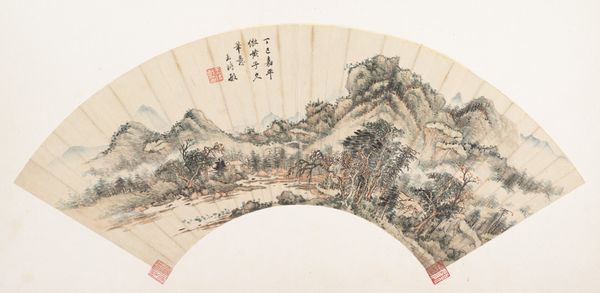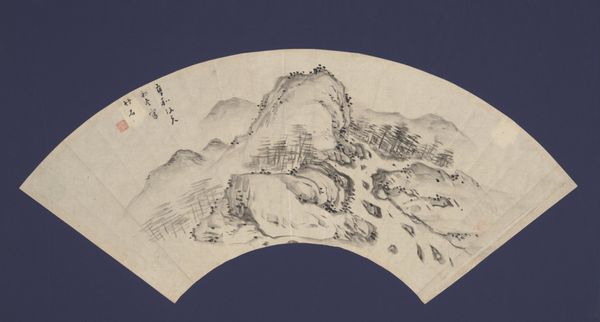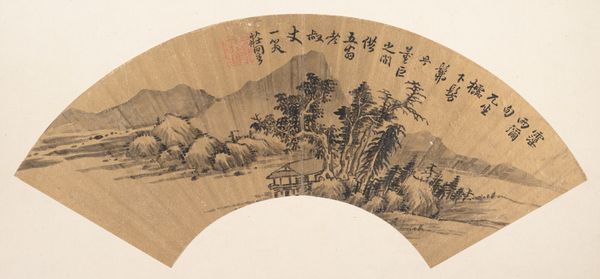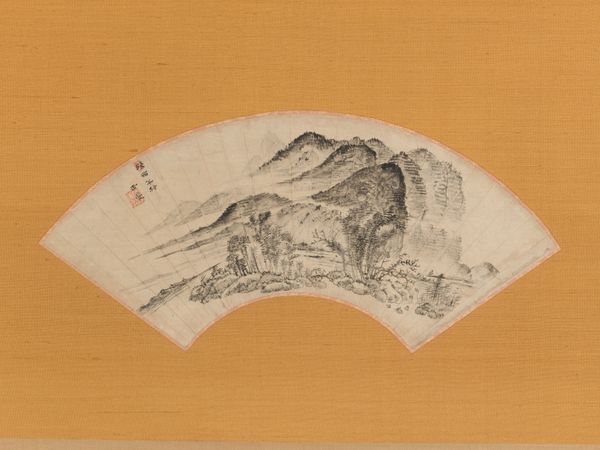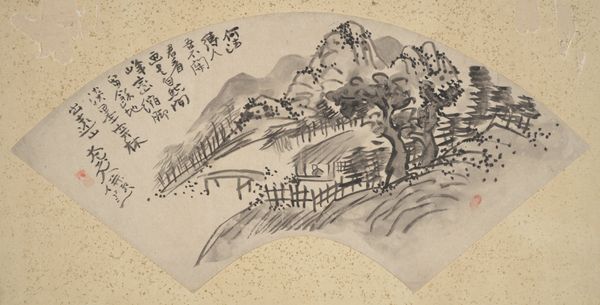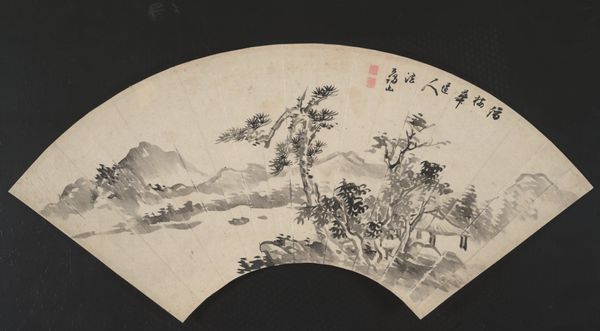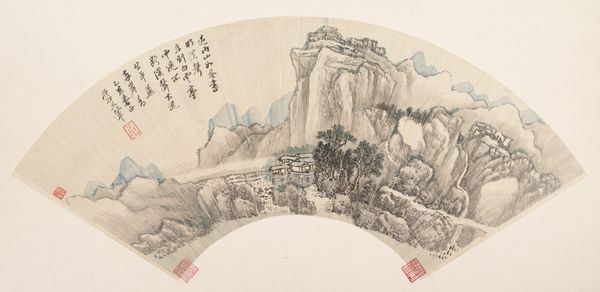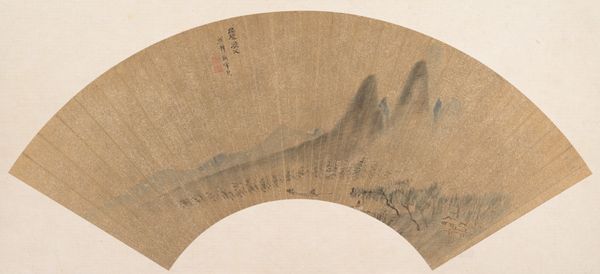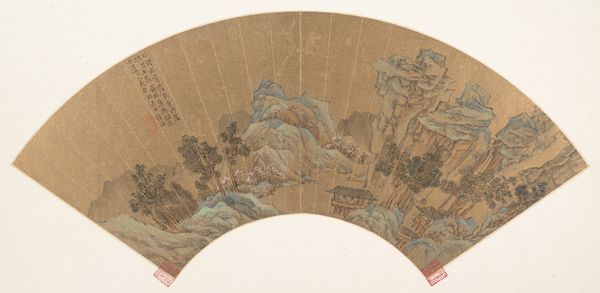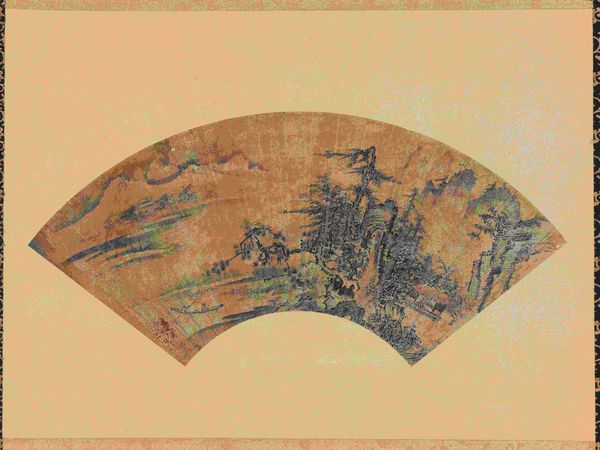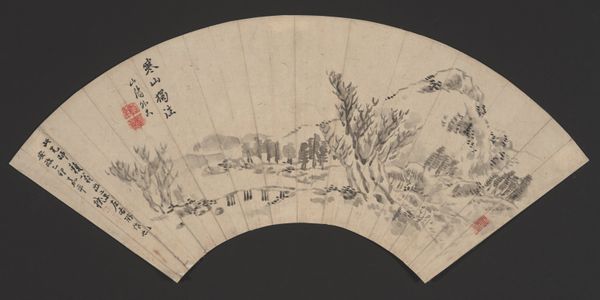
Mount Langya 琅琊山圖 Qing dynasty (1644–1911), 18th century 清朝
0:00
0:00
painting, paper, ink
#
painting
#
asian-art
#
landscape
#
paper
#
ink
#
calligraphy
Dimensions: 18.0 × 52.5 cm
Copyright: Public Domain
Editor: So, this is *Mount Langya*, painted by Dong Bangda in the 18th century, during the Qing Dynasty. It's ink on paper, in a fan shape. The landscape has a misty, dreamlike quality. What strikes you most about it? Curator: The landscape tradition is profoundly symbolic. Tell me, what emotions does the mountain evoke in you? Beyond just "dreamlike," consider its historical and cultural significance. Editor: Well, I suppose the mountains feel…enduring? Almost permanent, but also remote. The little figures are so small, they seem insignificant. Curator: Precisely. Mountains, in Chinese painting, often represent a connection to the heavens, embodying strength, stability, and the dwelling place of immortals. Do you notice how the artist used empty space, and what message does that create? Editor: Yes! Now I see it, creating that remote atmosphere with blank spaces around the peaks to reinforce that feeling of being far away. So the tiny figures are intentional? Curator: They are a carefully considered part of the whole. Landscape painting wasn’t really about literal landscapes, was it? But the Daoist principle of humanity in harmony with nature and the importance of understanding one’s small place within the universe. Are you beginning to notice symbolic parallels or linkages between different visual elements here? Editor: I see the painting in a new light now. Those small figures take on new importance as active participants in the great vastness of nature! Thanks. Curator: And it’s about what cultural symbols mean, too. It’s important for today’s world of cultural continuity to carry across our past generations.
Comments
No comments
Be the first to comment and join the conversation on the ultimate creative platform.

